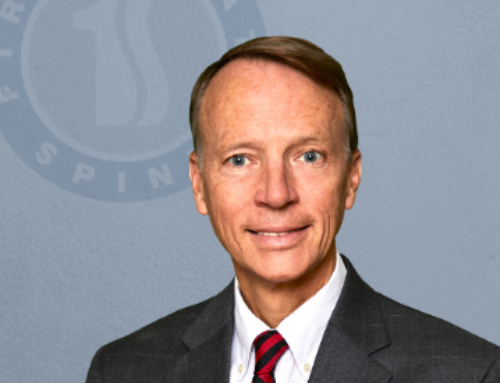Whether as a result of injury, poor habits, or normal wear-and-tear, pain in the neck can be real and debilitating.
Neck pain is one of the leading causes of disability in the United States. Most acute neck pain episodes will resolve with or without treatment, but nearly half of those who report pain in their necks will suffer from frequent recurrences.[i]
However, the good news for those patients is that science and technology are working together to help physicians pinpoint the exact source of neck pain and offer new long-lasting relief options.
Identifying the Source of the Pain
Advancements in imaging technologies allow physicians to better look at the intricacies of the spine like never before. These technologies enable them to see the exact spots in the cervical spine—the seven vertebrae at the top of the spine that support the neck area—that may cause chronic, unresolved neck pain. These include:
- Cartilage Degeneration: Like all joints in the body, cartilage separates the neck’s vertebrae. When this cartilage begins to break down, bone spurs can develop, which makes the neck painful.
- Cervical Facet Joint Dysfunction: If the facet joints connected to the neck vertebrae become inflamed or injured, neck pain, stiffness, and reduced mobility may result.
- Herniated (bulging) Discs: Six intervertebral discs separate the cervical bones. They consist of a solid outer layer that protects the disc’s soft gel-like interior. If the outer layer weakens or tears, it may protrude into the spinal canal and affect nearby nerves, causing pain.
Cellular Treatments to Reduce Neck Pain
Physical therapy can resolve most neck pain cases with lifestyle improvements (including ways to avoid cell phone-induced pain such as “text neck”) and over-the-counter anti-inflammatories.
But when the pain persists, pain medicine specialists can offer several long-lasting pain relief options, including using substances naturally found in the body and can heal injured tissues. These cellular products, often referred to as orthobiologics, provide new possibilities for treating stubborn neck pain.
- Platelet Rich Plasma treatments capitalize on blood platelets’ healing properties since they release growth factors and proteins that promote tissue repair. At the same time, plasma carries hormones, electrolytes, and nutrients required to nourish cells during the healing process. PRP treatments can help reduce inflammation in the cervical spine and help restore neck strength.
- Prolotherapy (Proliferative Therapy) injections deliver dextrose and other medications into the cervical spine to help jump-start the natural healing response. Prolotherapy can be used in conjunction with platelet-rich plasma to expedite healing.
- Stem Cells have the unique ability to develop into the specific cell needed, whether that be a tendon, ligament, cartilage, or bone. They are taken from the patient’s bone marrow or adipose (fat) tissue, concentrating on maximizing their unique healing capabilities and reinjecting at the exact source of the neck pain using ultrasound or x-ray guidance. These treatments can reduce inflammation and help the body regenerate cartilage between the vertebrae in the cervical spine.
Applying Proven Treatments to Neck Pain
Regenerative medicine specialists have been using orthobiologics for decades with great success to treat other orthopedic conditions, including knee arthritis, back pain, tennis and golf elbow, rotator cuff tears, and more.
A select few are now applying their experience to put these powerful healing sources to work to address neck pain. Patients considering orthobiologic treatments for severe neck pain should research clinics and practices to ensure they:
- Only use autologous (from the patient’s own body) products. Currently, the U.S. Food and Drug Administration (FDA) does not allow stem cells derived from amniotic fluid or other fetal tissues to treat orthopedic conditions because these donor products have not been tested for safety or efficacy.
- Use highly specialized centrifuges that enable them to create customized treatments that provide the highest concentration of orthobiologics from the patient’s own body.
- Employ fluoroscopic (x-ray) or ultrasound guidance to ensure targeted delivery of the healing materials directly to the injured neck area.
- Have a demonstrated track record of success with other orthobiologic treatments and interventional spine procedures. including published outcomes.
- Require board-certified physicians in interventional pain medicine or anesthesiology (not physician assistants or nurse practitioners) to perform the procedure.
- Only perform procedure at an accredited ambulatory surgery center that provides the highest level of care.
Because orthobiologic treatments for neck pain are relatively new within regenerative medicine, patients need to ask the right questions. They should consider only those practitioners who have extensive experience in interventional spine procedures including regenerative medicine.
[i] https://www.mayoclinicproceedings.org/article/S0025-6196(14)00833-7/abstract
https://www.stemcures.com/stem-cell-therapy-for-neck-pain-cincinnati




